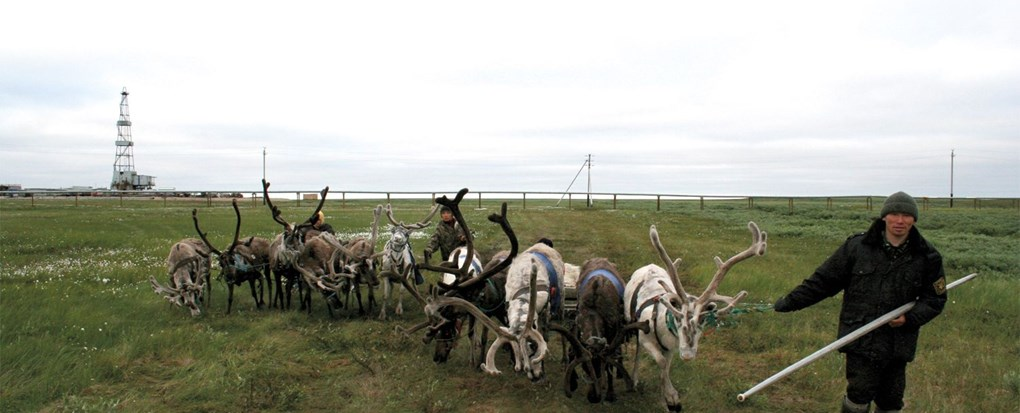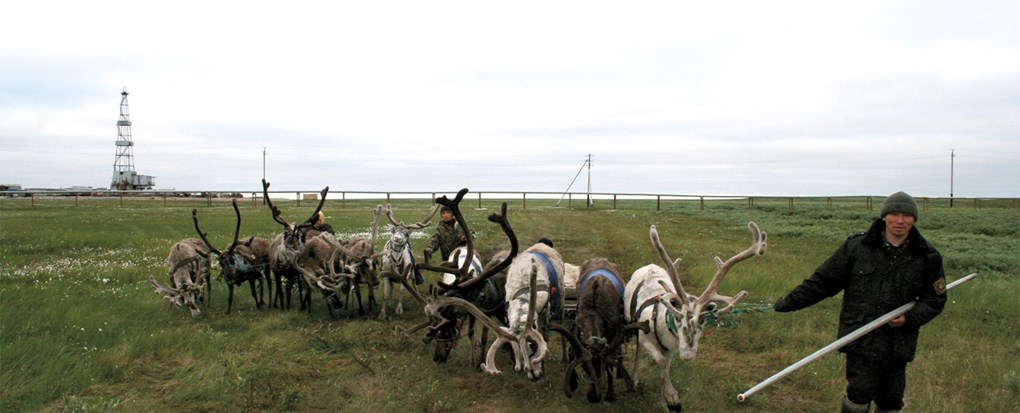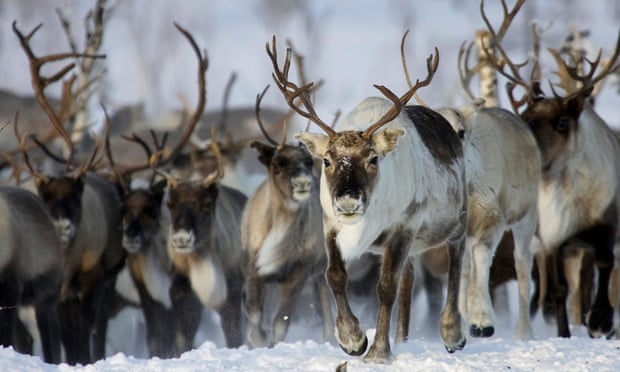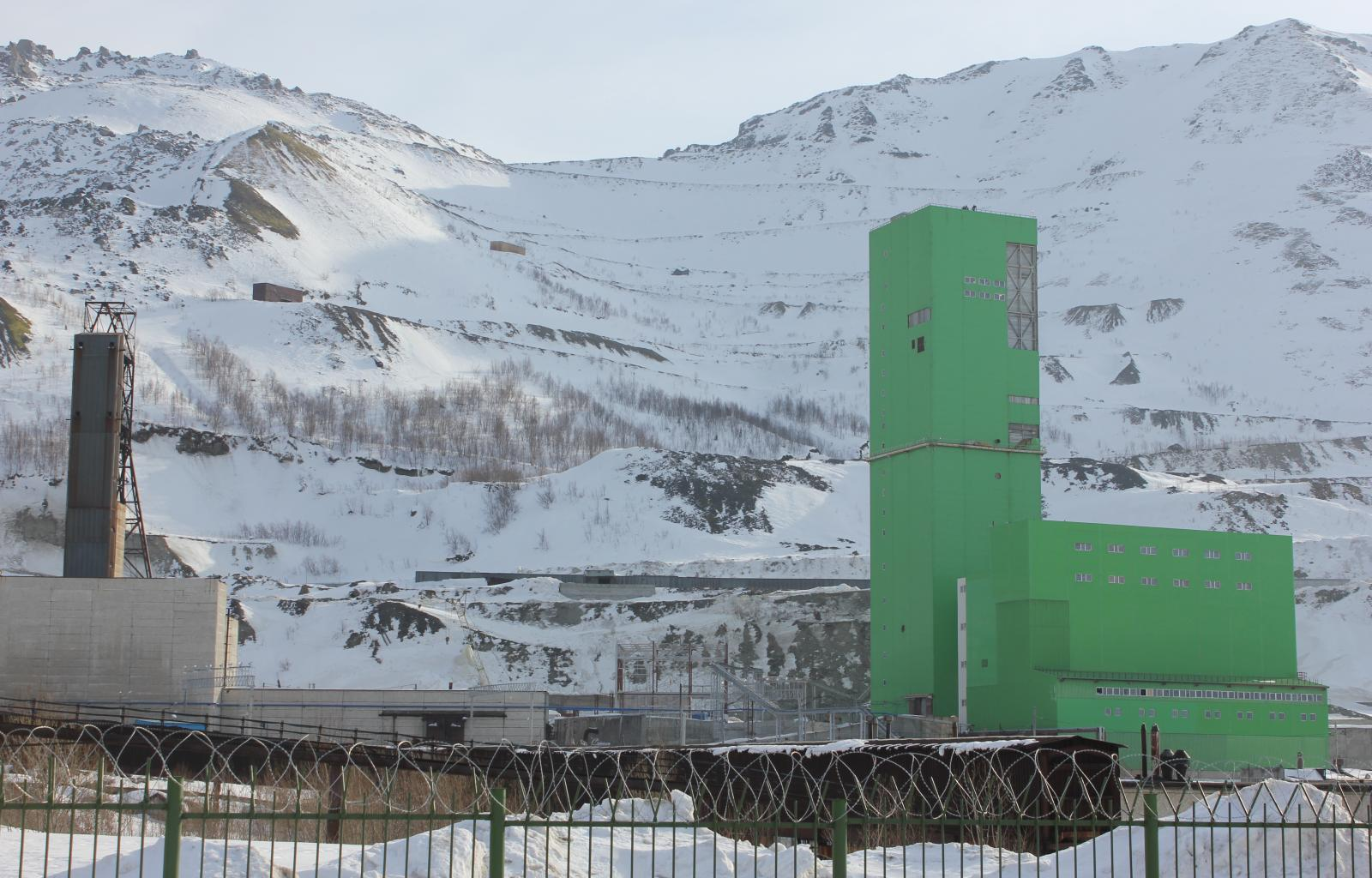
Environmental Protection and Infrastructure
Module 3: Environmental Protection and Infrastructure
Learning Outcomes
- Gain awareness about the environmental threats and issues that the Indigenous peoples of Russia face.
- Compare the environmental impact that colonization has had on the Indigenous peoples of the US and Russia.
NOTE: You can find articles, discussion questions, and other resources related to this module below.
Background
Indigenous peoples’ relationship with the Russian government is shaped and informed by how the Russian Empire and Soviet government classified and treated Indigenous peoples. Knowledge of that history is essential to understanding the present-day situation between Indigenous peoples and the Russian state.
Historical Background and Soviet Industrialization
- Industrialization was the main goal of the Soviet government.
- Most of the investment went into more industrialization rather than infrastructure for other areas.
- Environmental concerns were of secondary importance.
- Many of these types of policies have continued.
Russian Geography and Resources
- Russia is full of a number of important and highly in-demand resources: oil, gas, coal, gold, diamonds, and rare metals.
- Many of these resources are located in areas that are both sparsely populated and that have traditionally been where Indigenous people live.
- Because they are so sparsely populated, historically, Russia has seen these areas as “terra nullius” which means nobody’s land.
Key Terms
Terra nullius- Latin term meaning “empty land.” This was how Russians viewed a lot of Siberia even though there were Indigenous people living there.

"Reindeer herder" Photo credit: Bruce Forbes

Watch this video to learn more about the Native responses to this pipeline
Case Study: The Sakha People and the Environment
The Soviet and Russian governments’ approaches to how they have interacted with Indigenous peoples have been directly related to its approach toward environmental protection and conservation and economic development. Often, this involved the Indigenous people being displaced or the sources of their livelihood being polluted, destroyed, or taken. In the following, you will learn more about this history and connect it with similar situations in the United States.
Key Terms
Extractive industries- Businesses that engage in the extraction of raw materials.
The Sakha Republic and Extractive Industries
- The Soviet and Russian governments’ interactions with Indigenous peoples had a direct impact on these governments' approaches toward
environmental protection and conservation and economic development. - The Sakha Republic is about 20% of the landmass of Russia, making it an absolutely immense territory.
- It has deposits of gold and diamonds and still undeveloped gas and oil reserves.
- Many Sakha are employed by the companies that extract resources.
- Much of the wealth from these natural resources leave the republic.
Discussion Questions
Is Russia’s current approach to developing or extracting resources a form of colonization? How might it be similar or different from the types of colonialism you have learned about?
“Kirovsk, a mining town located in the Kola Peninsula, Russia” Photo credit: Ingrid Bay-Larsen
Environmental Degradation in the Sakha Republic
- The Vilyuy River, located in the eastern area of the Sakha Republic, used to be a thriving ecosystem; however, its environment has gradually been destroyed.
- Collective industrial farming during the Soviet period, as well as unregulated diamond mining in the area, polluted the river water. This led to the destruction of the ecosystem, as well as increasing illnesses and deaths among the Sakha who live nearby.
- Between 1974 and 1987, the government also performed underground nuclear tests in the area without the knowledge of the inhabitants. The fallout from these tests has been linked to higher rates of cancers and other diseases.
Discussion Questions
- Who are the stakeholders in this situation, and who should have the authority to decide what happens to the land? Why?
- How can we weigh the possible benefits and drawbacks of this type of development?
Case Study: The Saami People
- In 2019, the Saami people complained to the United Nations after a portion of their land was transferred to a private hunting farm.
- The land had previously been used as reindeer pastures.
- The Saami feared the land transfer would lead to the hunting of reindeer, which is illegal, and would also endanger the reindeer population in the area.
- The Saami people have traditionally been dependent on reindeer herding for their livelihood.
- Ultimately, the Saami came to the conclusion that the hunting club would attract investments into the area.

“Reindeer in the Yamal Peninsula, Russia.” Photo: Vasily Fedosenko, Reuters
Debate: Economic Benefits Versus Preservation of the Environment and Traditions
Have students discuss the balance between these two sides. If you want, you can divide the class into two sides to debate the issue or have it as an open-ended discussion in the class. Prompt students to reflect on the different approaches to these questions in Russia and the US.
Consider the following questions:
- What does reading the article on the Saami people and the hunting club tell you about how Indigenous people in Russia work to preserve their way of life?
- How do environmental issues impact Indigenous peoples’ lives in Russia?
- What might prompt an Indigenous community to acquiesce to the wishes of extractive industry, and what might be the repercussions or potential benefits of doing so?
- To what extent do Indigenous communities exercise agency in interacting with extractive industries and companies?
“Indigenous Arctic Population Accuses Russian Authorities of Rights Violations.” The Moscow Times, April 1, 2019. https://www.themoscowtimes.com/2019/04/01/indigenous-arctic-population-accuses-russian-authorities-of-rights-violations-a65040
“Internationalisation with the Use of Arctic Indigeneity: The Case of the Republic of Sakha (Yakutia), Russia.” By Emily Maj. Polar Record, Volume 48, Issue 3. https://www.proquest.com/docview/1013837430?parentSessionId=Z8oFjRGCXA9ubcqS%2Bk%2BBuxj5GM8EQLun2e8DPxwnbno%3D
“Silent Spring in Siberia: The Plight of the Vilyuy Sakha.” By Susie Crate. Cultural Survival Quarterly Magazine, 1996. https://www.culturalsurvival.org/publications/cultural-survival-quarterly/silent-spring-siberia-plight-vilyuy-sakha
“Sustainable Development in the Bering Strait: Indigenous Values and the Challenge of Collaborative Governance.” By George Stetson and Stephen Mumme. Society and Natural Resources, Volume 29, Issue 7. https://www.tandfonline.com/doi/full/10.1080/08941920.2015.1080340
“The fight over the Dakota Access pipeline, explained.” Vox. December 5, 2016. https://www.youtube.com/watch?v=qJZ1-LAFOTo
“The Saami complained to the UN authorities of the Murmansk region because of the transfer of reindeer pastures to a hunting club.” Meduza, March 29, 2019. https://meduza.io/news/2019/03/29/saamy-pozhalovalis-na-vlastey-murmanskoy-oblasti-v-oon-iz-za-peredachi-olenih-pastbisch-v-arendu-ohotnichiemu-klubu
